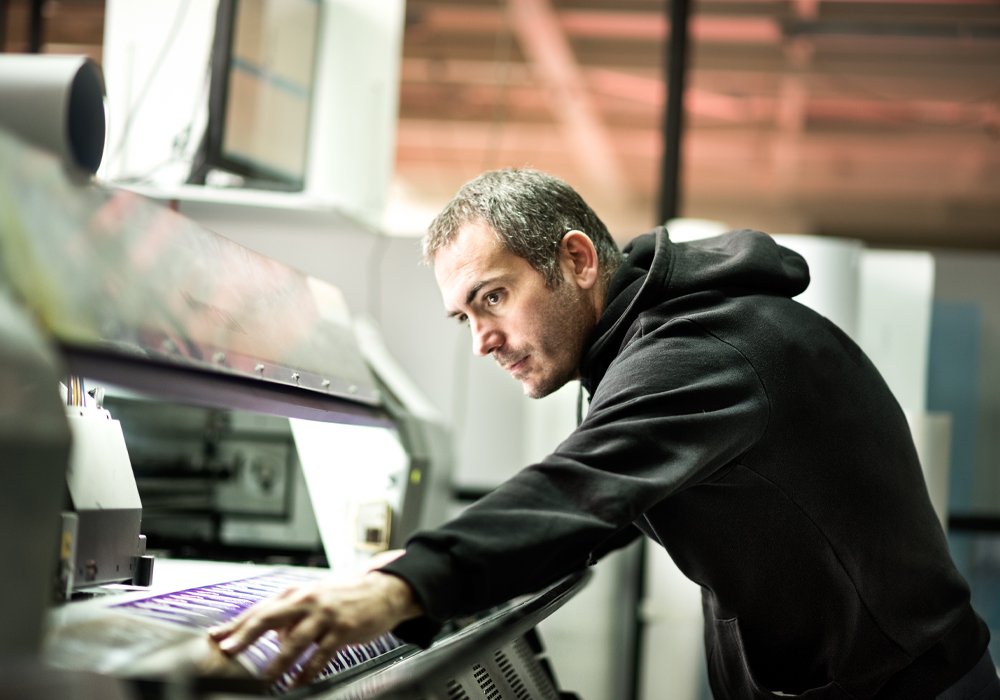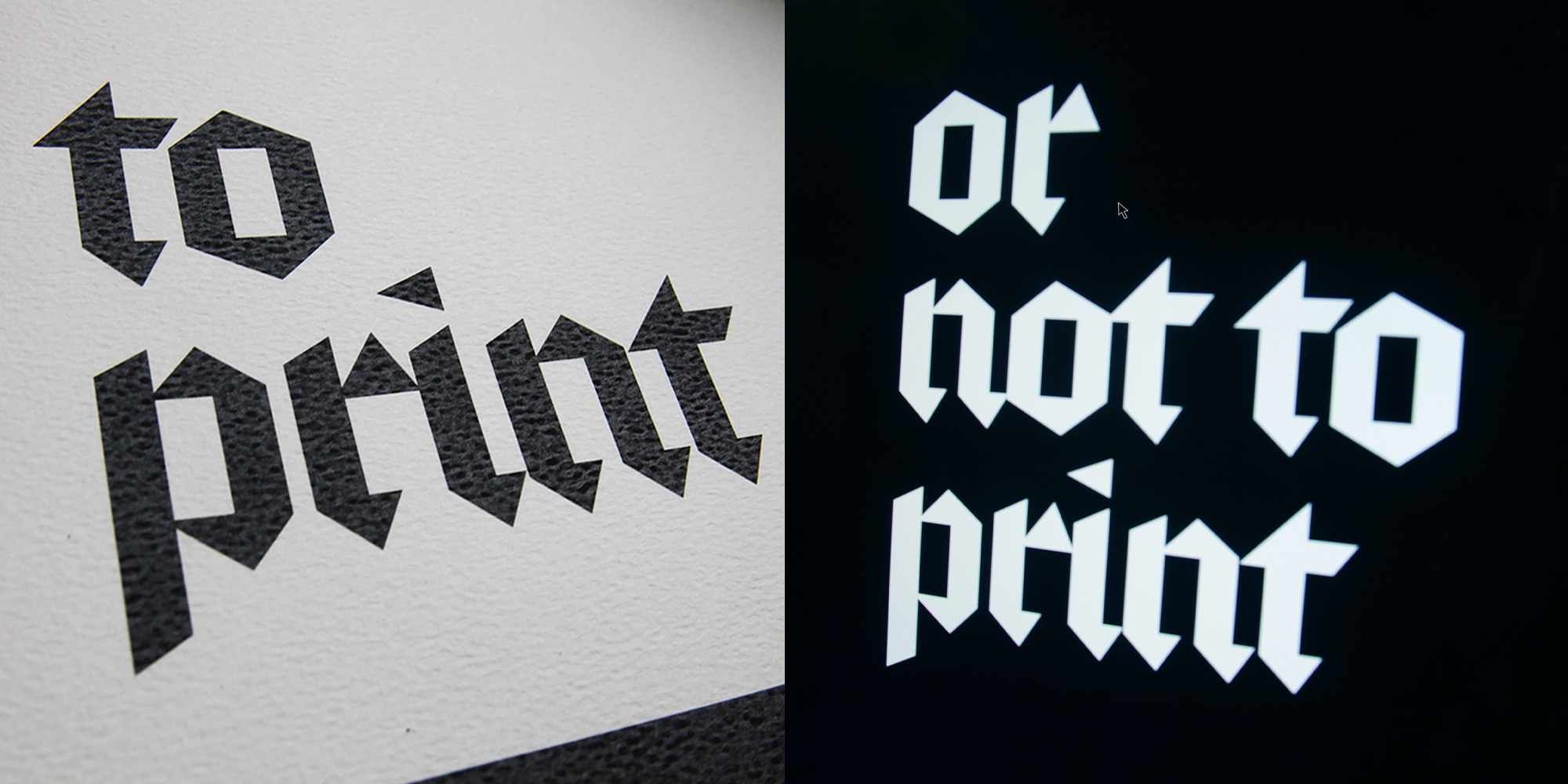“Print’s dead” We’ve all heard it. Maybe you’ve even said it yourself. Tut tut.
According to Google Trends, the phrase was at its peak in 2004, no doubt echoing throughout creative agencies, media teams and many households too. By 2008, the dust had settled and we’d all moved on to worrying about greater things.
The truth is, print is far from dead, and it never really died. In the same way that we saw music move from physical media to online streaming, the music industry didn’t die, it just evolved. We feel that print has been on a similar journey, but it’s important to acknowledge its decline and understand its value. We’re going to lay out a fair and balanced argument for print, and specifically, how it relates to our work as an agency that continues to deliver physical media for its clients.
An iPad! An iPad! My kingdom for an iPad!
Let’s rewind to 2004 and understand exactly what was happening during that time to encourage the deathly chants across so many sectors. You could be forgiven for assuming the proliferation of tablets and laptops was to blame, but honestly, the consumer tech market in the early 2000’s was pretty underwhelming.
Apple was still producing the PowerBook, and the first Android tablet was six years off. However, we did welcome the first iPod, and whilst this wasn’t the first consumer MP3 player, it certainly kicked off broader concerns around physical record sales. A digitisation foreshadowing, if you will.
Let’s zoom out and take a broader look at what was happening in the agency and media landscape during this time and how it accidentally started a storm in a teacup.
Online media
The popularity of online media outlets versus their physical counterparts was hard to ignore. Ebooks, online news, digital advertising and the emergence of social media kicked off a chain reaction that certainly had an impact on the print industry, with many traditional publications seeing a sharp decline in readership and revenue.
Advertising
Advertisers voted with their budgets, shifting their focus from print ads to digital ads. There’s absolutely no doubt that the arrival analytics, targeting and reach made this a no-brainer for many brands. This had a direct impact on many printed publications that relied so heavily on advertising to subsidise overheads.
The economy
2008 dealt a crushing blow to many already struggling industries, with print media being no exception. Businesses that were already facing challenges were forced into closure with production and distribution costs making digital media impossible to compete with alongside a global recession and slowdown in consumer spending.
The environment
Environmental concerns have been made loud and clear when it comes to turning a mirror against the print industry. Deforestation, paper waste and carbon emissions are just a few of the arguments against printed media. Of course, digital alternatives are greener, but how much greener? We’ll look into this in greater detail in a few paragraphs’ time.

If print be the food of love, play on
And here we are in 2023, print alive and well, albeit a little different. Did print ever come close to dying? We don’t think so. Much like the music industry, it has weathered disruption and change, but not crisis. Of course, there have been casualties along the way, with several big-name publications ceasing to exist in physical form, and many small printing houses closing down. But at a broader level and in our personal experience, we are more grateful than ever for print and the creative opportunities that it presents us.
We don’t necessarily feel compelled to put forward an argument for print – it’s obvious to most of us now that it’s here to stay in one way or another. And although we can’t quite predict its end-game or final form, we feel that it’s in a really special place where printed media is something to behold and cherish, compelling its audience more so than it ever did before.
In short, print is gratifying and joyful when used right. Here’s why and how:
Print is more cost-effective than ever before
The emergence of digital printing has radically changed what print houses are capable of. Smaller print runs are now more affordable, with vastly improved setup and turnaround times. Typically, digital printing offers a more flexible approach, which is good for agencies like us. We can make changes easily and take a more ‘on-demand’ approach, which greatly benefits us and our clients.
There is still huge audience demand for print
Whilst the broad shift to digital does make good sense in many areas (for example, QR code menus as a result of the pandemic or the digitisation of legal documentation), it’s important to acknowledge user needs and behavioural change. Just because we have access to smartphones and whilst many of us spend our days at a keyboard, does it make sense to shift everything online?
Audiences still have a need or desire for something touchable and tangible, and whilst we do have a responsibility to look at more sustainable methods, it’s about balance and context rather than wholesale change. For us at Silverback, this is where we need to spend time understanding our clients’ customers and understanding the channels they use.
An alternative to our brave new world
Not a day goes by when we don’t see a new article on how AI is changing an industry or how automation threatens a particular job. Whilst some of this is a little overhyped for the headlines, it’s a concern for many. But we must remember that audiences are smart and adaptable, and adaption goes both ways. A notable example of this is the resurgence of vinyl sales – a medium that many critics assumed would fall flat on its face.
There is a certain degree of ‘overwhelm’ when we consider just how much of our work and personal lives are being consumed by devices. Print, much like vinyl, is a welcome break from digital and can be an effective medium for cutting through the noise and slowing us all down a little.
In an age where mental health and screen time are a major concern for many, audiences are muting notifications and shelving their digital devices en masse, so let’s find ways to acknowledge and respect that.
Stand out against your competitors
Print does still ‘delight’ when it lands on a Marketing Director’s desk. And when it comes to pitching your services or selling your product, this may well be the cherry on top that sweetens the deal. We’ve worked with enough businesses large and small to understand the value that print media can add to the overall customer journey, whether that’s something small like a beautifully designed card within a boxed product, or a catalogue making it easier for buyers to search for and purchase items when they don’t have online access.
Less is more
Sure, it’s one of the most clichéd phrases out there. But it’s incredibly relevant in the context of print. It’s all too easy to keep on adding text, images, sections and pages when it comes to digital media. The seemingly infinite possibilities can often mean that websites or PDFs spiral into triple-digit page counts without a second thought.
Printed media forces you to think about quantity; that key message, those headlines, the word count and the overall consolidation of your brand or message into a limited size or shape. This is great practice for any brand or agency, and it’s something that is easily forgotten in the digital realm.
Permanence and longevity
The tangible, physical nature of print gives it a presence that digital media can’t come close to replicating. Step into any creative agency, museum, brand HQ or public space, and you’ll quickly find some gleaming examples of high-end print that proudly adorn shelves or coffee tables.
There’s a degree of sentimentality still attached to print. What’s the digital equivalent of this? Adding a PDF to ‘Desktop’? Saving a link to ‘Bookmarks’? It’s not quite the same, and before long, that link or file becomes buried under many others just like it.
And some final vital points which we cannot afford to ignore:
Brand perception
Printed materials convey a strong sense of professionalism, credibility, and brand identity. High-quality print can leave a lasting impression and enhance the perceived value of a brand or organisation.
Carbon emissions
The web isn’t as green as we assume when we consider the power requirements of websites, hosting and search engines. Direct comparisons against printing are difficult to draw, but it’s safe to say that digital products come at a cost when it comes to carbon.
Packaging
Physical products certainly aren’t going anywhere anytime soon. Packaging presents a unique opportunity to deliver compelling branding, copywriting and creativity. There are several ways to make packaging more sustainable too, such as giving it a second use once the product has been removed, or creating it from biodegradable or compostable materials.
Accessibility
Perhaps the most important point of all – how do we cater for those without access to digital devices or internet connectivity? We simply cannot apply a broad brushstroke to audiences, and we must consider everyone’s accessibility requirements. Print remains effective in a context where technology, economy or geography restrict a user, not to mention physical or mental accessibility requirements.

Once more unto the print, dear friends, once more
It’s important to remember that print and digital can and will coexist. Across the last 15 years, we’ve seen both mediums face their respective challenges, and that’s to be expected in a world where technology is advancing at a blistering pace, with user needs zigging and zagging to keep up with the change.
A hybrid approach is the way forward, and for us as a branding agency, we will always consider print alongside or even instead of a digital approach. The priority for us is to maximise the impact of our clients’ products and campaigns.
To paraphrase just one more time…
Let’s have a chat…
"*" indicates required fields

 Blog Posts
Blog Posts 


